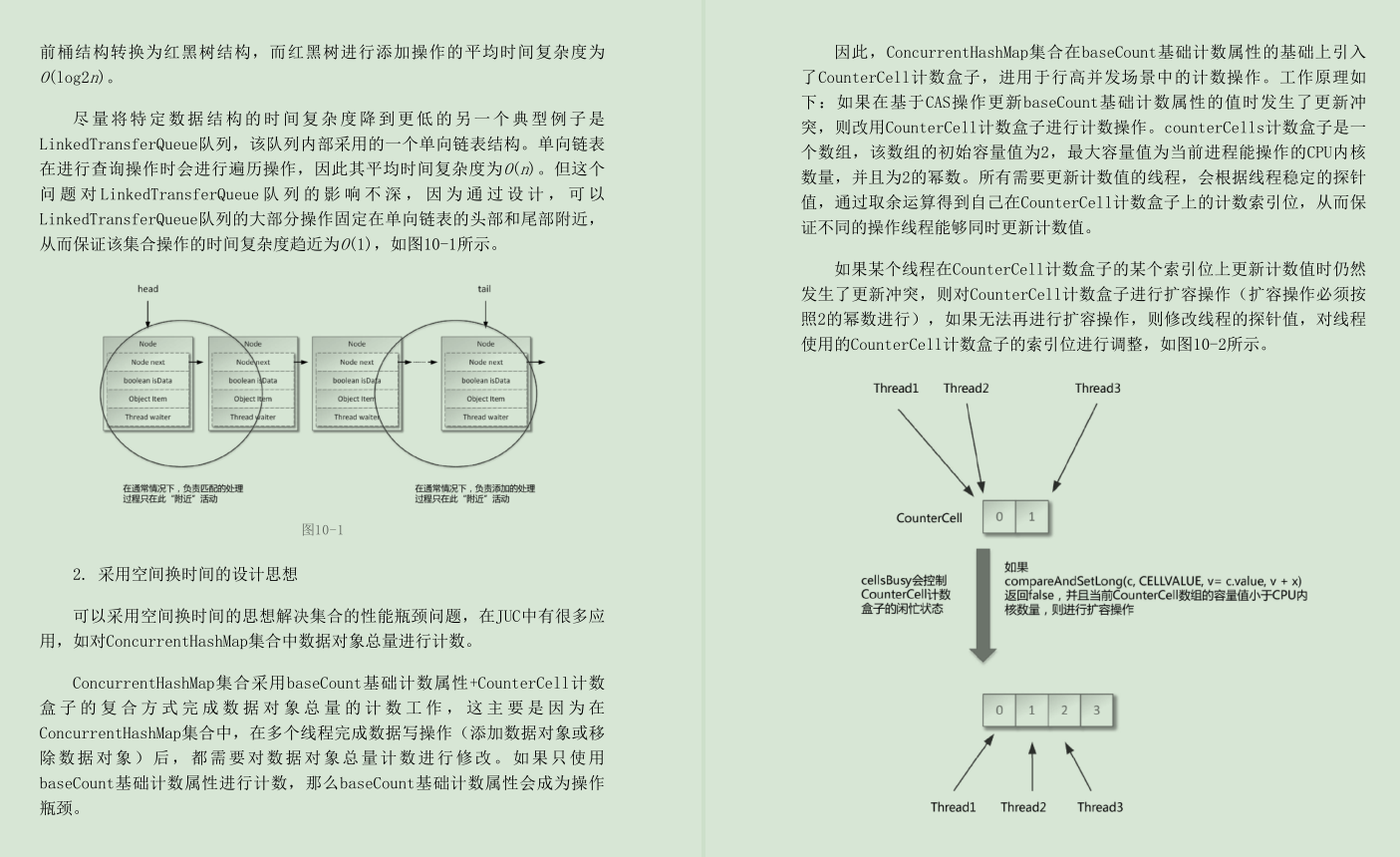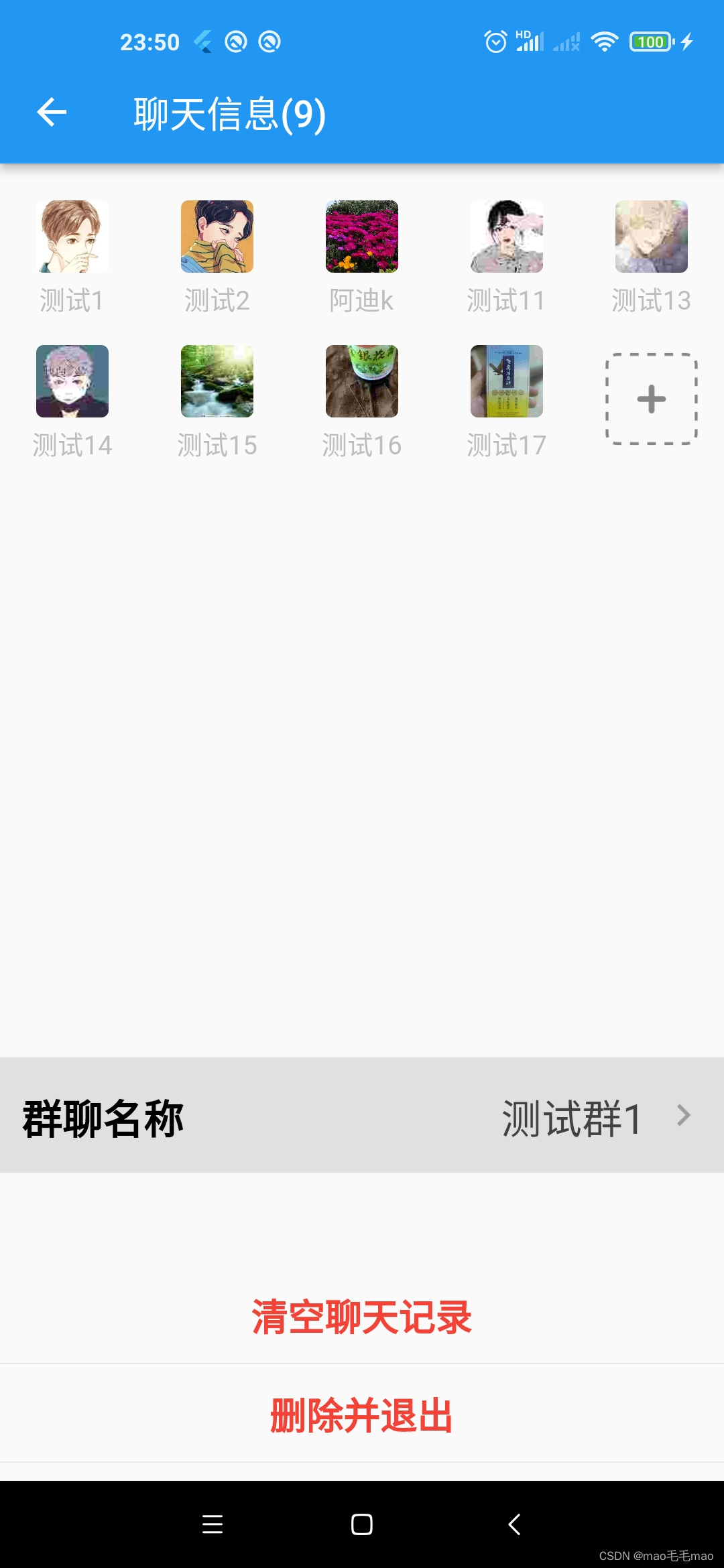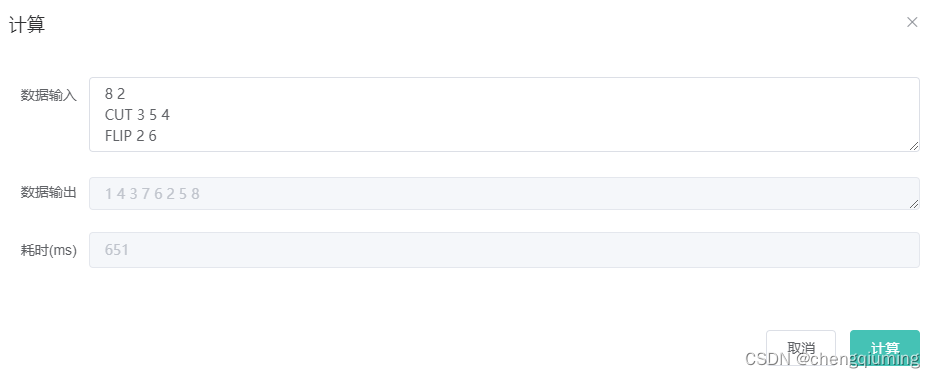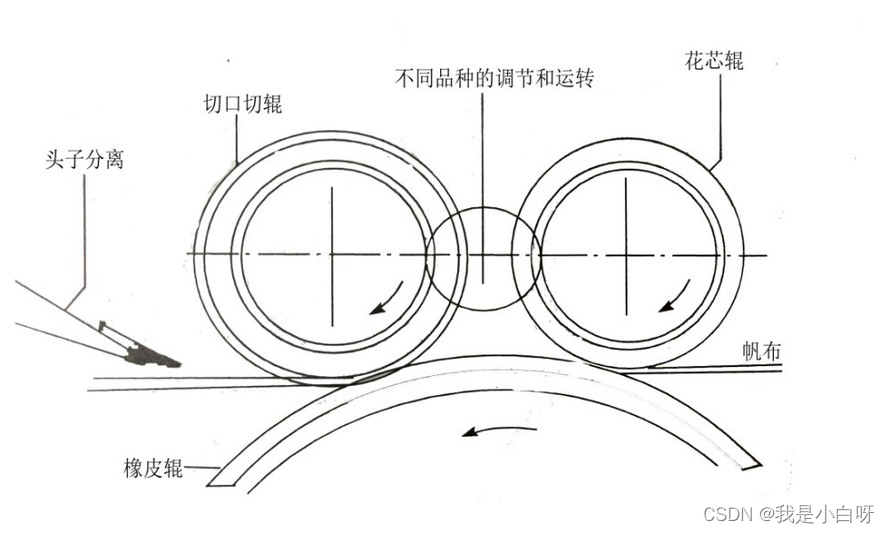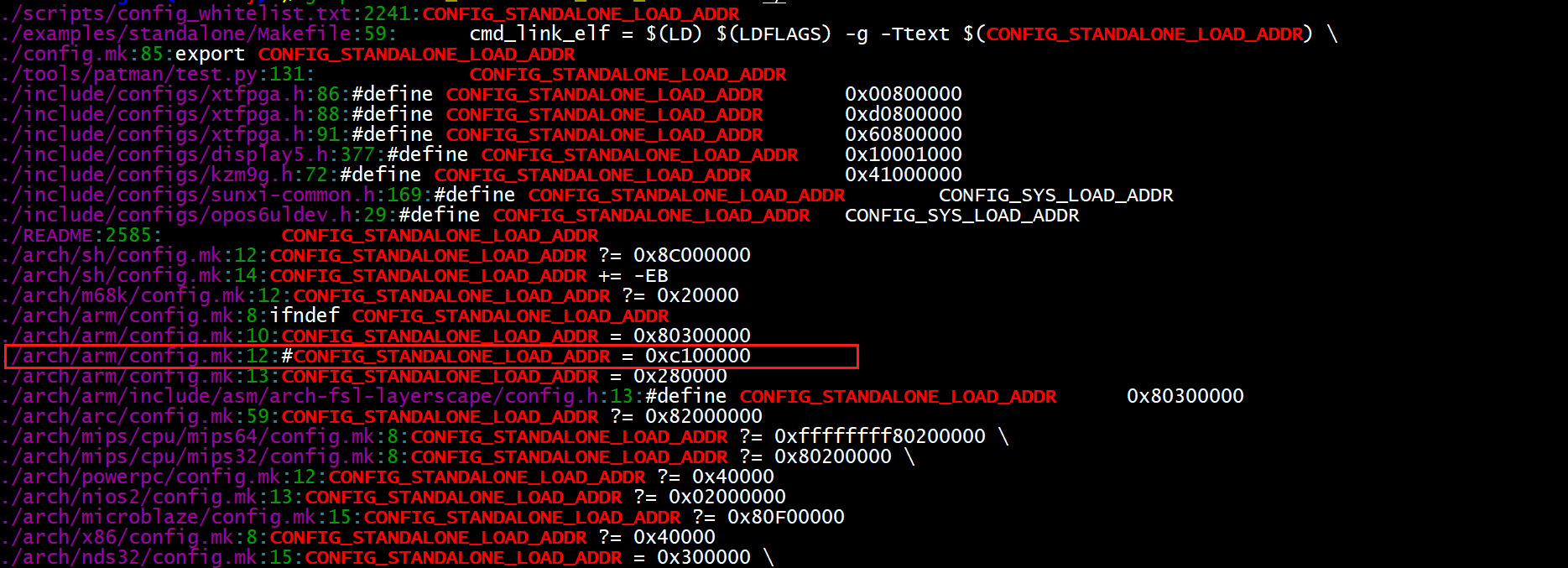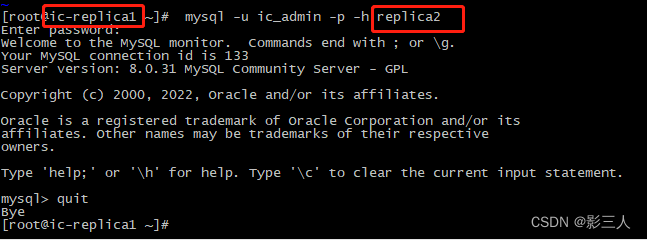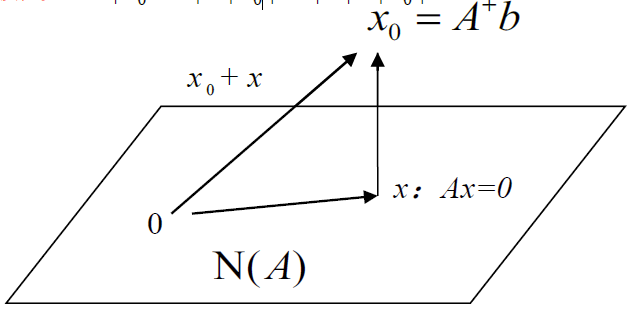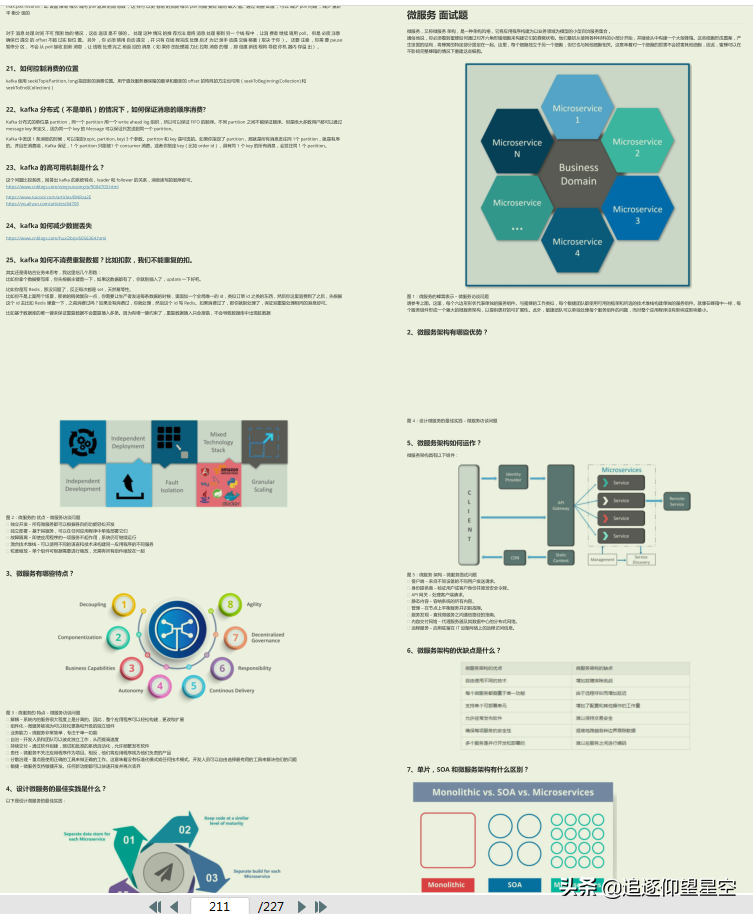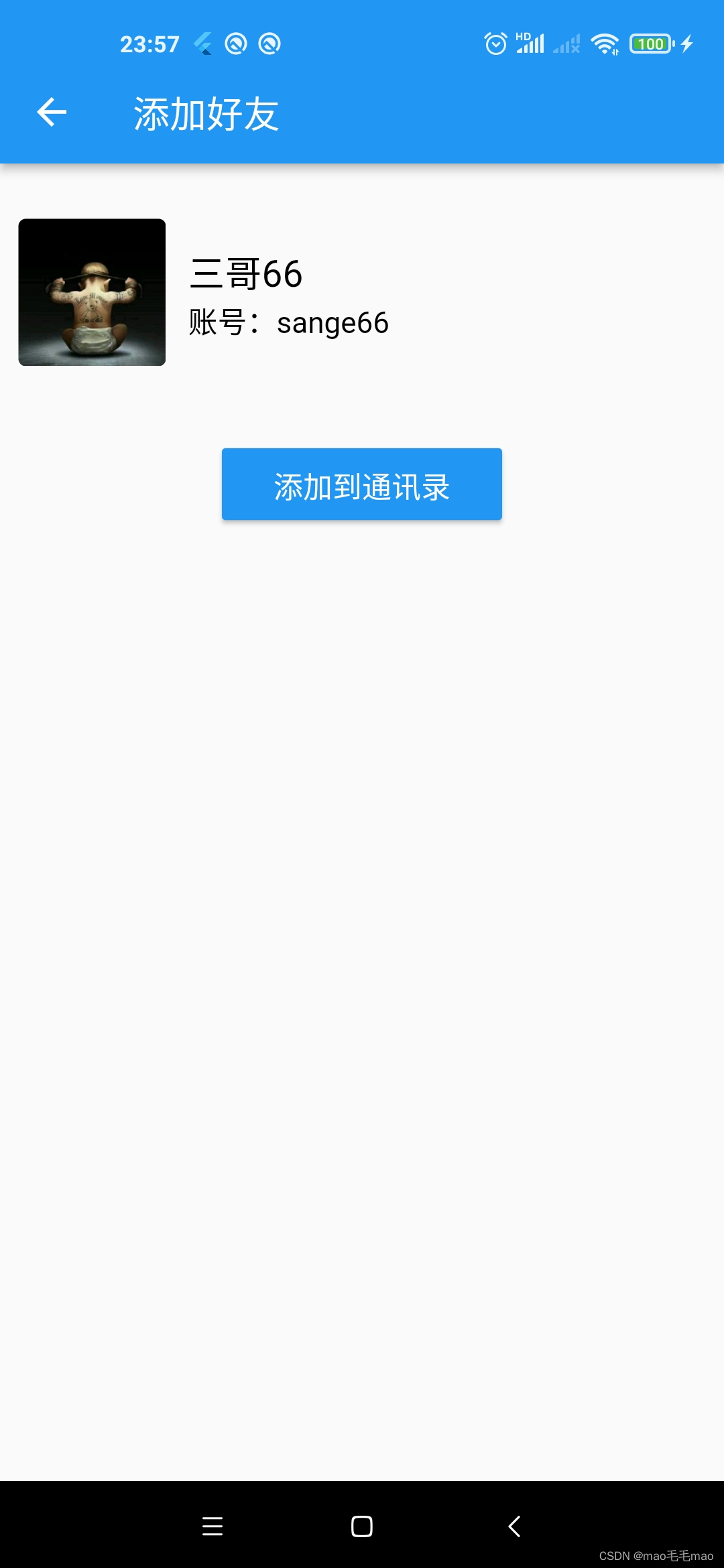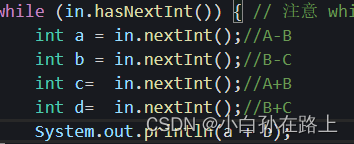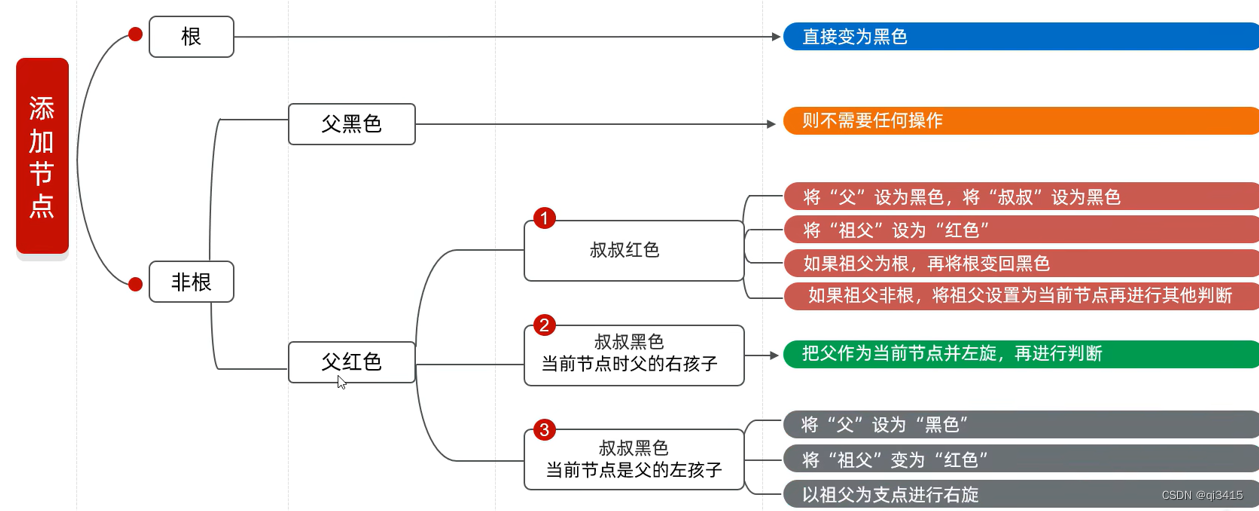一、RESTFul 概述
1、什么是 RESTFul?
- REST 全称 Representational State Transfer 代表 表现层资源状态转移
- 视图层 + 控制层 == 表现层
- 百度百科这样说:
- RESTFUL是一种网络应用程序的设计风格和开发方式,基于HTTP,可以使用XML格式定义或JSON格式定义。
- RESTFUL 适用于移动互联网厂商作为业务接口的场景,实现第三方 OTT 调用移动网络资源的功能,动作类型为新增、变更、删除所调用资源。
2、主要是对网络资源进行操作,那么什么是资源?
- web工程放到服务器上的过程叫部署,在服务器上,万物皆资源
- 是一种理解方式的名词定义,将服务器当做由很多离散资源组成的一个整体
- URI 是资源的名称,同时也是资源在Web服务器上的地址,用户可以在客户端应用通过URI对感兴趣的资源进行交互
- 一个资源可以由一个或多个URI来标识
3、什么是资源的表述?【就是资源的体现形式】
- 资源的表述是一段对于资源在某个特定时刻的状态的描述。例如HTML、XML、音频视频等【资源表述的不同格式】
- 资源的表述格式可以通过协商机制来确定,请求和响应方向的表述通过使用不同的格式
- 资源可以在客户端和服务器端进行交换(转移)【将服务器的资源呈现到客户端】
4、什么是状态转移?
- 通过转移和操作资源的表述,来简介实现操作资源
- 转移:将服务器中的资源转移到客户端
- 操作资源的表述:请求路径
二、操作方式说明
-
在HTTP协议里面,有四个表示基本操作的动词:
- GET 获取资源
- PUT 更新资源
- POST 新建资源
- DELETE 删除资源
-
REST 风格提倡使用地址传值的方式
- 不使用问号键值对的方式携带请求参数,而是从前到后各个单词用斜杠分开
- 意思是将要发送给服务器的数据作为URL的值的一部分
- 属于对URL地址使用统一的规范,进而保证整体风格的一致性
-
不从功能角度,从思想角度我们分析一下应该如何实现?【针对某个资源而言】
-
同一个请求路径,不同的请求方式来表示不同的操作
- 这个不同的操作可以通过RequestMapping注解的method属性指定,也可以使用对应的派生注解
-
如果我们需要传递参数, 我们在控制器方法上的RequestMapping注解对应位置,使用
/{参数名}的方式- 假设我们希望通过 id 查询用户数据 【超链接是GET请求】
@GetMapping("/user/{id}") public String getUserById(){ System.out.println("根据id查询用户信息"); return "success"; }对应请求的超链接我们可以这样写,使用了占位符,就必须传递对应位置参数的数据
<a th:href="@{/user/1}">根据id查询用户信息</a><br> -
如果我们需要通过前端表单获取数据,然后添加我们的用户信息【我们采用POST方式】
@PostMapping("/user") public String insertUser(String username, String password){ System.out.println("添加用户信息: " + username + " " + password); return "success"; }在前端页面表单method的属性需要指定为 POST【测试POST有两种办法,表单、AJAX】
<form th:action="@{/user}" method="post"> 用户名 <input type="text" name="username"><br> 密码 <input type="text" name="password"><br> <input type="submit" value="添加"> </form>
-
-
对于浏览器大多只支持 POST 和 GET 请求,其他请求默认为 GET 请求,那么我们想实现PUT 和 DELETE 请求应该怎么办呢?
☀️ 在SpringMVC 中提供了HiddenHttpMethodFilter 帮我们将POST请求转换为 DELETE 或 PUT 请求
-
我们如何使用这个机制?
-
需要在 web.xml 中注册这个过滤器,因为过滤器是按注册位置先后执行的,所以我们要把设置编码的过滤器放到最前面
<filter> <filter-name>HiddenHttpMethodFilter</filter-name> <filter-class>org.springframework.web.filter.HiddenHttpMethodFilter</filter-class> </filter> <filter-mapping> <filter-name>HiddenHttpMethodFilter</filter-name> <url-pattern>/*</url-pattern> </filter-mapping> -
然后通过表单发起请求,并将请求方式设置为 POST,再添加一个name属性参数值为 _method = “请求方式”【PUT / DELETE】
<form th:action="@{/user}" method="put"> <input type="hidden" name="_method" value="PUT"> 用户名 <input type="text" name="username"><br> 密码 <input type="text" name="password"><br> <input type="submit" value="修改"> </form> -
在控制器中设置对应的方法就行
@PutMapping("/user") public String updateUser(String username, String password){ System.out.println("修改用户信息: " + username + " " + password); return "success"; } -
这里使用了控制器方法的形参获取请求参数,如果对获取请求参数不太了解可以参考 传送门
-
-
接下来我们通过一个CRUD案例,来演示具体功能的实现
三、案例演示
-
需求:实现对员工信息的增删改查 【我们写一个集合来存储数据,并不真正的去连接数据库】
-
准备工作:
-
创建新模块 springMVC-rest,添加打包方式和使用的依赖
<?xml version="1.0" encoding="UTF-8"?> <project xmlns="http://maven.apache.org/POM/4.0.0" xmlns:xsi="http://www.w3.org/2001/XMLSchema-instance" xsi:schemaLocation="http://maven.apache.org/POM/4.0.0 http://maven.apache.org/xsd/maven-4.0.0.xsd"> <modelVersion>4.0.0</modelVersion> <groupId>com.atguigu</groupId> <artifactId>springMVC-reset</artifactId> <version>1.0-SNAPSHOT</version> <packaging>war</packaging> <dependencies> <!-- SpringMVC --> <dependency> <groupId>org.springframework</groupId> <artifactId>spring-webmvc</artifactId> <version>5.3.1</version> </dependency> <!-- 日志 --> <dependency> <groupId>ch.qos.logback</groupId> <artifactId>logback-classic</artifactId> <version>1.2.3</version> </dependency> <!-- ServletAPI --> <dependency> <groupId>javax.servlet</groupId> <artifactId>javax.servlet-api</artifactId> <version>3.1.0</version> <scope>provided</scope> </dependency> <!-- Spring5和Thymeleaf整合包 --> <dependency> <groupId>org.thymeleaf</groupId> <artifactId>thymeleaf-spring5</artifactId> <version>3.0.12.RELEASE</version> </dependency> </dependencies> <properties> <maven.compiler.source>8</maven.compiler.source> <maven.compiler.target>8</maven.compiler.target> <project.build.sourceEncoding>UTF-8</project.build.sourceEncoding> </properties> </project> -
编写我们的 pojo 类,封装员工信息 Employee
package com.atguigu.rest.bean; /** * @author Bonbons * @version 1.0 */ public class Employee { private Integer id; private String lastName; private String email; // 1代表男,0代表女 private Integer gender; public Employee() { } public Employee(Integer id, String lastName, String email, Integer gender) { this.id = id; this.lastName = lastName; this.email = email; this.gender = gender; } public Integer getId() { return id; } public void setId(Integer id) { this.id = id; } public String getLastName() { return lastName; } public void setLastName(String lastName) { this.lastName = lastName; } public String getEmail() { return email; } public void setEmail(String email) { this.email = email; } public Integer getGender() { return gender; } public void setGender(Integer gender) { this.gender = gender; } @Override public String toString() { return "Employee{" + "id=" + id + ", lastName='" + lastName + '\'' + ", email='" + email + '\'' + ", gender=" + gender + '}'; } } -
在dao层创建一个类完成对数据库的操作,在这个类中用一个集合模拟数据库 EmployeeDao
package com.atguigu.rest.dao; import com.atguigu.rest.bean.Employee; import org.springframework.stereotype.Repository; import java.util.Collection; import java.util.HashMap; import java.util.Map; /** * 我们用Dao模拟操作数据库,实际不去连接数据库 * @author Bonbons * @version 1.0 */ @Repository public class EmployeeDao { private static Map<Integer, Employee> employees = null; static{ employees = new HashMap<Integer, Employee>(); employees.put(1001, new Employee(1001, "E-AA", "aa@163.com", 1)); employees.put(1002, new Employee(1002, "E-BB", "bb@163.com", 1)); employees.put(1003, new Employee(1003, "E-CC", "cc@163.com", 0)); employees.put(1004, new Employee(1004, "E-DD", "dd@163.com", 0)); employees.put(1005, new Employee(1005, "E-EE", "ee@163.com", 1)); } // 记录下一个用户可获得的 ID private static Integer initId = 1006; /** * 添加和修改用户信息 * @param employee 一个员工对象 */ public void save(Employee employee){ if(employee.getId() == null){ employee.setId(initId++); } employees.put(employee.getId(), employee); } /** * * @return */ public Collection<Employee> getAll(){ return employees.values(); } public Employee get(Integer id){ return employees.get(id); } public void delete(Integer id){ employees.remove(id); } } -
在 web.xml 中注册过滤器和前端控制器
<?xml version="1.0" encoding="UTF-8"?> <web-app xmlns="http://xmlns.jcp.org/xml/ns/javaee" xmlns:xsi="http://www.w3.org/2001/XMLSchema-instance" xsi:schemaLocation="http://xmlns.jcp.org/xml/ns/javaee http://xmlns.jcp.org/xml/ns/javaee/web-app_4_0.xsd" version="4.0"> <!--配置编码过滤器--> <filter> <filter-name>CharacterEncodingFilter</filter-name> <filter-class>org.springframework.web.filter.CharacterEncodingFilter</filter-class> <init-param> <param-name>encoding</param-name> <param-value>UTF-8</param-value> </init-param> <init-param> <param-name>forceResponseEncoding</param-name> <param-value>true</param-value> </init-param> </filter> <filter-mapping> <filter-name>CharacterEncodingFilter</filter-name> <url-pattern>/*</url-pattern> </filter-mapping> <!--处理put和delete请求的HiddenHttpMethodFilter--> <filter> <filter-name>HiddenHttpMethodFilter</filter-name> <filter-class>org.springframework.web.filter.HiddenHttpMethodFilter</filter-class> </filter> <filter-mapping> <filter-name>HiddenHttpMethodFilter</filter-name> <url-pattern>/*</url-pattern> </filter-mapping> <!--springMVC的前端控制器DispatcherServlet--> <servlet> <servlet-name>DispatcherServlet</servlet-name> <servlet-class>org.springframework.web.servlet.DispatcherServlet</servlet-class> <init-param> <param-name>contextConfigLocation</param-name> <param-value>classpath:springMVC.xml</param-value> </init-param> <load-on-startup>1</load-on-startup> </servlet> <servlet-mapping> <servlet-name>DispatcherServlet</servlet-name> <url-pattern>/</url-pattern> </servlet-mapping> </web-app> -
编写我们springMVC的核心配置文件
<?xml version="1.0" encoding="UTF-8"?> <beans xmlns="http://www.springframework.org/schema/beans" xmlns:xsi="http://www.w3.org/2001/XMLSchema-instance" xmlns:context="http://www.springframework.org/schema/context" xmlns:mvc="http://www.springframework.org/schema/mvc" xsi:schemaLocation="http://www.springframework.org/schema/beans http://www.springframework.org/schema/beans/spring-beans.xsd http://www.springframework.org/schema/context https://www.springframework.org/schema/context/spring-context.xsd http://www.springframework.org/schema/mvc https://www.springframework.org/schema/mvc/spring-mvc.xsd"> <!--扫描组件--> <context:component-scan base-package="com.atguigu.rest.controller, com.atguigu.rest.dao"/> <!--配置Thymeleaf视图解析器--> <bean id="ViewResolver" class="org.thymeleaf.spring5.view.ThymeleafViewResolver"> <property name="order" value="1" /> <property name="characterEncoding" value="UTF-8" /> <property name="templateEngine"> <bean class="org.thymeleaf.spring5.SpringTemplateEngine"> <property name="templateResolver"> <bean class="org.thymeleaf.spring5.templateresolver.SpringResourceTemplateResolver"> <property name="prefix" value="/WEB-INF/templates/" /> <property name="suffix" value=".html"/> <property name="templateMode" value="HTML5"/> <property name="characterEncoding" value="UTF-8" /> </bean> </property> </bean> </property> </bean> <!--配置访问首页--> <mvc:view-controller path="/" view-name="index"></mvc:view-controller> <mvc:view-controller path="/toAdd" view-name="employee_add"></mvc:view-controller> <!--开启mvc注解配置--> <mvc:annotation-driven /> <!--开放对静态资源的访问--> <mvc:default-servlet-handler /> </beans>
-
-
开始对我们提供的功能展开分析:
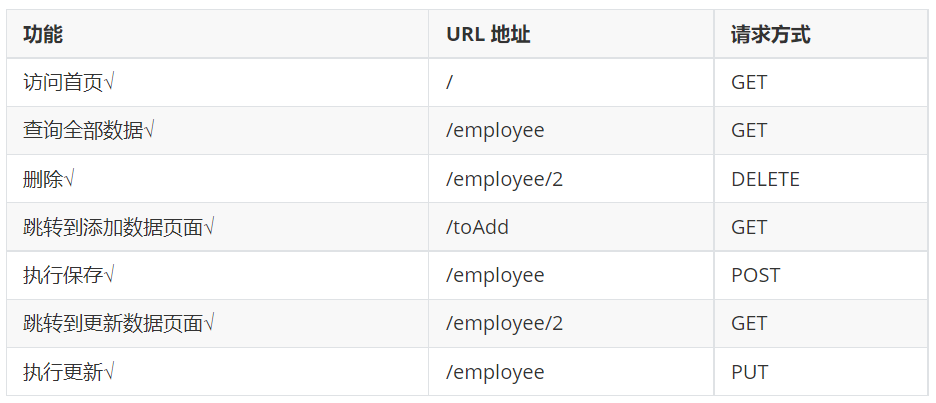
- 为了能够更加直观的显示操作结果,我们让添加、修改、删除操作完成之后,都重定向到查询全部数据的请求上
- 修改操作我们希望能显示我们指定id的信息,然后在显示信息的表单上作出我们想要的修改
- 对于员工id我们采用自增的方式,当调用我们save方法时,如果携带了id那么就修改原来的数据,如果没有携带id就保存当前数据
- 删除操作相对复杂,我们通过VUE将一个删除操作的超链接绑定当一个表单上,将请求方式替换为DELETE
-
接下来逐步实现我们的功能:
☀️ 首页
我们在视图控制器处已经完成了首页自动定位的工作,在首页里面通过一条超链接查询全部数据 index.html
<!DOCTYPE html>
<html lang="en" xmlns:th="http://www.thymeleaf.org">
<head>
<meta charset="UTF-8">
<title>Title</title>
</head>
<body>
<h1>首页</h1>
<a th:href="@{/employee}">查询所有员工信息</a>
</body>
</html>
☀️ 查询所有员工信息
编写我们查询结果显示页面 employee_list
- 表单用于收集数据,表格用于显示数据 【th 代表表头,可以自动加粗】
<!DOCTYPE html> <html lang="en" xmlns:th="http://www.thymeleaf.org"> <head> <meta charset="UTF-8"> <title>EmployInfo</title> </head> <body> <table border="1" cellspacing="0" cellpadding="0" style="text-align: center"> <tr> <th colspan="5">Employee Info</th> </tr> <tr> <th>id</th> <th>lastName</th> <th>email</th> <th>gender</th> <th>options(<a th:href="@{/toAdd}">add</a> )</th> </tr> <tr th:each="employee : ${employeeList}"> <td th:text="${employee.id}"></td> <td th:text="${employee.lastName}"></td> <td th:text="${employee.email}"></td> <td th:text="${employee.gender}"></td> <td> <!--当把id放到@{}内部+就不会报错了, 删除功能的超链接--> <a class="deleteA" @click="deleteEmployee" th:href="@{'/employee/'+${employee.id}}">delete</a> <a th:href="@{'/employee/'+${employee.id}}">update</a> </td> </tr> </table> </body> </html>
编写我们的控制器方法,后续只给出方法 EmployeeController
package com.atguigu.rest.controller;
import com.atguigu.rest.bean.Employee;
import com.atguigu.rest.dao.EmployeeDao;
import org.springframework.beans.factory.annotation.Autowired;
import org.springframework.stereotype.Controller;
import org.springframework.ui.Model;
import org.springframework.web.bind.annotation.*;
import java.util.Collection;
/**
* @author Bonbons
* @version 1.0
*/
@Controller
public class EmployeeController {
@Autowired
private EmployeeDao employeeDao;
@RequestMapping(value = "/employee", method = RequestMethod.GET)
public String getAllEmploy(Model model){
Collection<Employee> employeeList = employeeDao.getAll();
// 通过Model的对象将我们查询的所有员工信息添加到请求域中
model.addAttribute("employeeList", employeeList);
return "employee_list";
}
}
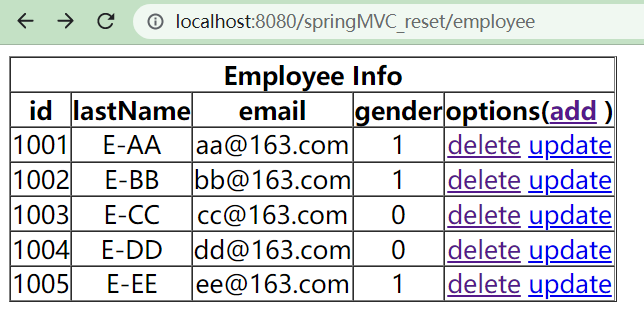
☀️ 保存新员工信息
- 我们肯定是需要一个表单来接收新的数据,所以我们通过一个 employee_add.html 页面收集数据
<!DOCTYPE html> <html lang="en"> <head> <meta charset="UTF-8"> <title>添加员工信息</title> </head> <body> <form th:action="@{/employee}" method="post"> lastName <input type="text" name="lastName"><br> email <input type="text" name="email"><br> gender <input type="radio" name="gender" value="1"> male <input type="radio" name="gender" value="0"> female <br> <input type="submit" value="add"><br> </form> </body> </html> - 在我们的 options 选项后添加一个超链接,用于发起添加数据的请求
<th>options(<a th:href="@{/toAdd}">add</a> )</th> - 在控制器中编写我们处理请求的方法,表单会携带数据过来,我们直接用员工类对象接收数据
// 添加员工信息 @RequestMapping(value = "/employee", method = RequestMethod.POST) public String addEmployeeAdd(Employee employee){ employeeDao.save(employee); // 为了显示添加效果,在添加成功后直接跳转到我们的查询全部员工的页面 return "redirect:/employee"; }
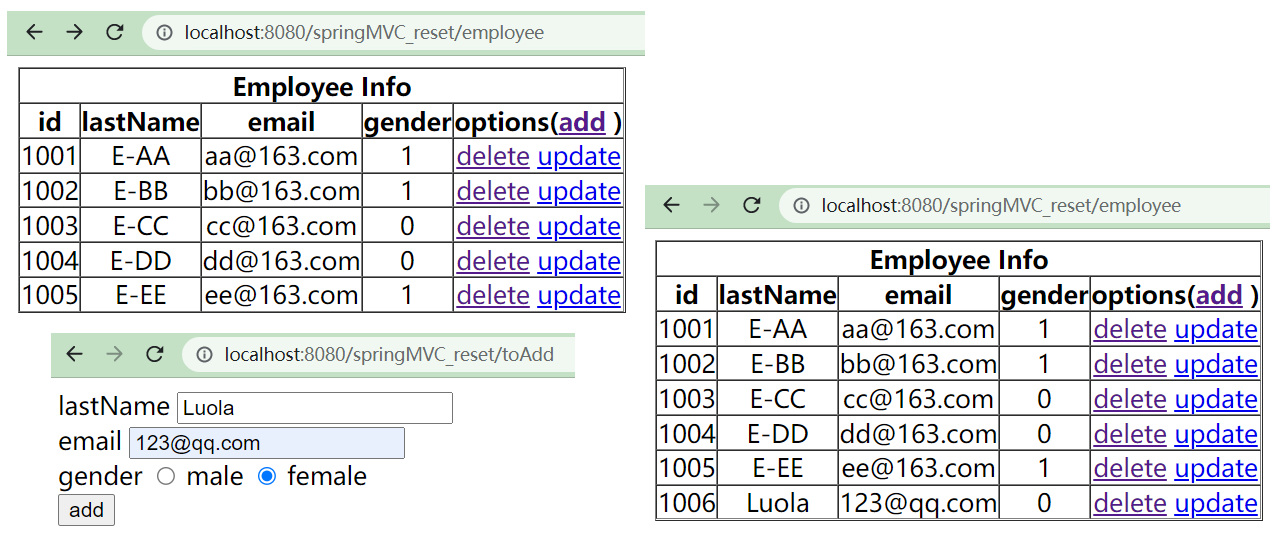
☀️ 修改员工信息
- 点击对应员工信息对应的 update,会携带对应id发起请求,我们先会根据这个id查询用户数据,将数据添加到请求域中
- 然后跳转到我们更新操作的页面,根据请求域中的数据进行回显【在表单中显示出这个用户除id的全部信息】
- 然后我们可以修改表单中的数据,提交后再次发起请求,将封装后的信息覆盖原信息
完善在 表格中的 update 超链接
<a th:href="@{'/employee/'+${employee.id}}">update</a>
在控制器中完成根据 id 查询信息并保存到 request 请求域中,跳转到我们的更新页面
// 根据id查询,然后回显数据到更新表单
@RequestMapping(value = "/employee/{id}", method = RequestMethod.GET)
public String getEmployeeById(@PathVariable("id") Integer id, Model model){
// 根据传递进来的参数进行查询
Employee employee = employeeDao.get(id);
// 将查询到的数据添加到我们的请求域中
model.addAttribute("employee", employee);
return "employee_update";
}
编写我们更新数据的页面 employee_update.html
<!DOCTYPE html>
<html lang="en">
<head>
<meta charset="UTF-8">
<title>更新员工信息</title>
</head>
<body>
<form th:action="@{/employee}" method="post">
<!--这里需要完成数据回显,就是显示出每项原来的数据是什么-->
<!--尽管我们添加对象的时候不用传入id,但是应该设置隐藏属性,到时候传递回去封装数据用-->
<!--回显后我们需要修改数据,所以将请求方式设置为 put,在点击提交后再次发起请求-->
<input type="hidden" name="_method" value="put" />
<input type="hidden" name="id" th:value="${employee.id}">
lastName: <input type="text" name="lastName" th:value="${employee.lastName}"><br>
email: <input type="text" name="email" th:value="${employee.email}"><br>
gender: <input type="radio" name="gender" value="1" th:field="${employee.gender}">male
<input type="radio" name="gender" value="0" th:field="${employee.gender}">female<br>
<input type="submit" value="update"><br>
</form>
</body>
</html>
编写我们实际更新员工信息的控制器方法
// 更新我们的员工信息
@RequestMapping(value = "/employee", method = RequestMethod.PUT)
public String updateEmployee(Employee employee){
employeeDao.save(employee);
return "redirect:/employee";
}

☀️ 删除员工信息
-
删除只需要在对应员工信息后面点击一下,所以通过超链接发起请求【@click=“deleteEmployee” 通过vue处理点击事件】
<a @click="deleteEmployee" th:href="@{'/employee/'+${employee.id}}">delete</a> -
因为删除是 DELETE 请求,所以我们通过一个表单转换请求
<!-- 通过超链接控制表单的提交,将post请求转换为delete请求 --> <form id="delete_form" method="post"> <!-- 我们使用了HiddenHttpMethodFilter过滤器,传递_method请求参数,value为最终的请求方式 --> <input type="hidden" name="_method" value="delete"/> </form> -
需要引入我们的 vue.js ,点击可以跳转下载vue.js
<script type="text/javascript" th:src="@{/static/js/vue.js}"></script> -
引入资源之后,需要重新打包导入我们的资源,然后需要在核心配置文件中配置开放静态资源的访问
<!--开启mvc注解配置--> <mvc:annotation-driven /> <!--开放对静态资源的访问--> <mvc:default-servlet-handler /> -
这俩都要配置,如果只有第二个配置(handler),就会导致只能访问静态资源
-
接下来通过vue完成绑定【注意是一个单独的标签,不嵌套到表单内】
script type="text/javascript"> var vue = new Vue({ el:"#dataTable", methods:{ //event表示当前事件 deleteEmployee:function (event) { //通过id获取表单标签 var delete_form = document.getElementById("deleteEmployee"); //将触发事件的超链接的href属性为表单的action属性赋值 delete_form.action = event.target.href; //提交表单 delete_form.submit(); //阻止超链接的默认跳转行为 event.preventDefault(); } } }); </script> -
在控制器中编写控制器方法
// 根据id删除员工信息 @RequestMapping (value = "/employee/{id}", method = RequestMethod.DELETE) public String deleteEmployee(@PathVariable("id") Integer id){ employeeDao.delete(id); return "redirect:/employee"; }

📖 补充知识点:
- tomcat中的web.xml 是所有我们部署的工程中的web.xml的父类【发生冲突就近原则】
- 客户端发送的请求先被我们的Dispatcher处理,处理不了交给我们DefaultServlet处理 ,再处理不了就404
